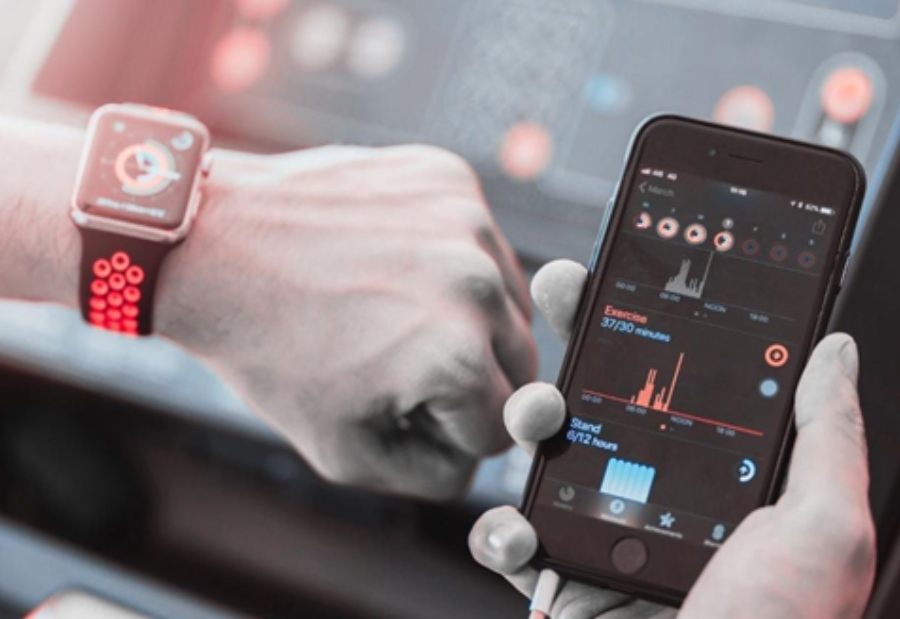In a world that’s becoming increasingly connected, wearable technology has emerged as a transformative force—blending innovation with everyday functionality. What began as simple fitness trackers has now evolved into sophisticated smart wearables that monitor health, enhance communication, augment reality, and even predict medical conditions. As we stand on the cusp of another tech revolution, let’s dive into the fascinating evolution and promising future of wearable technology.
A Brief History: From Utility to Lifestyle
The concept of wearable tech isn’t as modern as it may seem. In fact, it dates back to the 1960s when Edward Thorp invented a wearable computer to predict roulette outcomes. Fast forward to the 1970s, Hewlett-Packard introduced a calculator watch, signaling the start of wearable consumer gadgets.
The Fitness Boom
The real consumer adoption began in the early 2000s with devices like pedometers and heart rate monitors. The launch of Fitbit in 2009 marked a major turning point, turning step-counting into a social and gamified experience. These early wearables were limited but laid the foundation for mass adoption.
The Smartwatch Era
The introduction of the Apple Watch in 2015 catapulted wearables into the mainstream. No longer confined to health metrics, wearables could now send messages, make calls, use apps, and serve as remote controls for other devices. Samsung, Garmin, and Google quickly followed, expanding the ecosystem and use cases.
Current Capabilities: More Than Just Accessories
Today’s wearable devices are not just smart—they’re intelligent.
- Health Monitoring: Devices like Fitbit, Apple Watch, and Whoop Band track everything from sleep cycles and blood oxygen to ECG and stress levels.
- AR/VR Wearables: Meta’s Quest headsets and Apple Vision Pro are reshaping how we consume media, collaborate, and even train.
- Smart Clothing: Embedded with sensors, these garments track muscle movement, posture, and biometrics, mainly used in sports and healthcare.
- Medical-grade Devices: FDA-approved smartwatches now help detect atrial fibrillation and other chronic conditions, creating new pathways for preventive care.
The Future of Wearable Tech: What’s Next?
The future of wearable technology is not just exciting—it’s transformative. Here’s where it’s headed:
1. Invisible and Seamless
The next generation of wearables will be almost invisible—integrated into contact lenses, skin patches, or even embedded under the skin. Companies are already experimenting with smart tattoos and bio-integrated sensors.
2. AI-Powered Personalization
With the power of AI, wearables will evolve into true health companions. Expect devices that provide real-time, hyper-personalized insights—like early warnings for potential illnesses or tailored mental wellness support based on your mood and biometric data.
3. Augmented and Mixed Reality
Mixed reality glasses will blend the digital and physical world. From virtual workspaces and immersive learning to guided surgeries and retail, AR wearables will revolutionize interaction across industries.
4. Enhanced Interoperability
Future wearables will act as control hubs, integrating seamlessly with smart home devices, cars, and digital ecosystems. Your smartwatch could unlock your car, adjust your home lighting, or even automate office tasks.
5. Sustainability and Energy Harvesting
Tech companies are exploring energy-harvesting materials, like solar-powered fabrics or kinetic energy, to power wearables without frequent charging—making them more sustainable and user-friendly.
Challenges Ahead
As with any innovation, wearable tech faces key hurdles:
- Privacy and Data Security: With access to sensitive health data, ensuring robust protection is non-negotiable.
- Battery Life: Longer-lasting batteries are essential for wider adoption of high-functioning wearables.
- Affordability and Accessibility: Democratizing wearable tech will be vital to unlock its full societal impact.
Final Thoughts: The Wearable Revolution is Just Beginning
Wearable technology has traveled a long way from being a niche gadget to becoming a central player in the digital transformation of health, communication, and lifestyle. As innovation accelerates, wearables will become less about tech and more about enhancing the human experience.
Whether it’s managing your health, navigating the metaverse, or simply staying connected—your next wearable won’t just sit on your wrist. It will know you, learn from you, and adapt to you.
Also read: Viksit Workforce for a Viksit Bharat
Do Follow: The Mainstream formerly known as CIO News LinkedIn Account | The Mainstream formerly known as CIO News Facebook | The Mainstream formerly known as CIO News Youtube | The Mainstream formerly known as CIO News Twitter |The Mainstream formerly known as CIO News Whatsapp Channel | The Mainstream formerly known as CIO News Instagram
About us:
The Mainstream formerly known as CIO News is a premier platform dedicated to delivering latest news, updates, and insights from the tech industry. With its strong foundation of intellectual property and thought leadership, the platform is well-positioned to stay ahead of the curve and lead conversations about how technology shapes our world. From its early days as CIO News to its rebranding as The Mainstream on November 28, 2024, it has been expanding its global reach, targeting key markets in the Middle East & Africa, ASEAN, the USA, and the UK. The Mainstream is a vision to put technology at the center of every conversation, inspiring professionals and organizations to embrace the future of tech.




